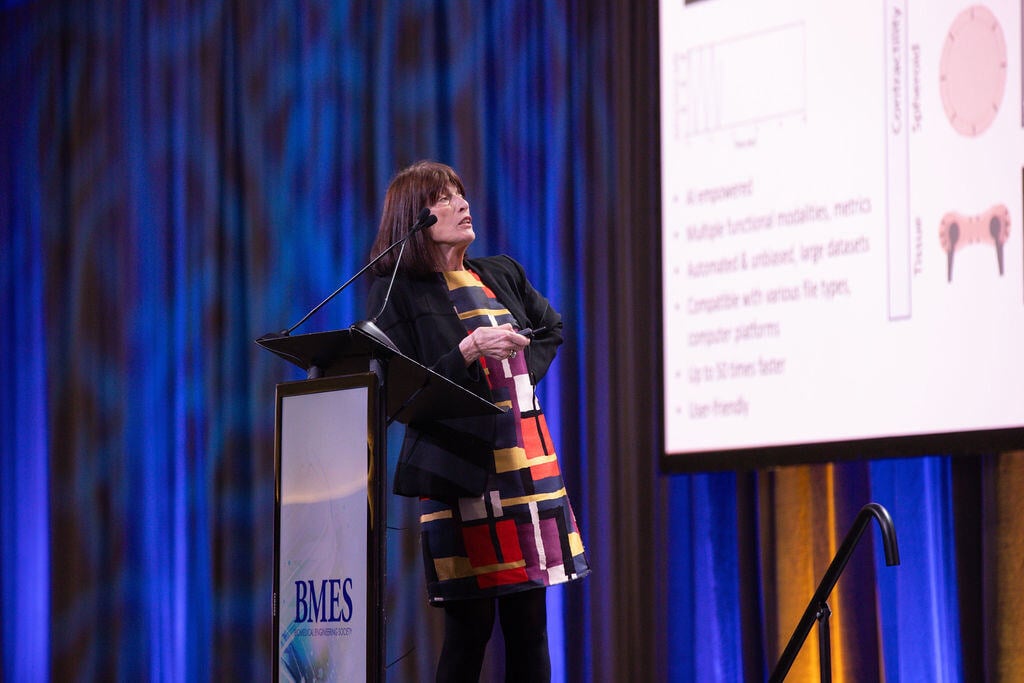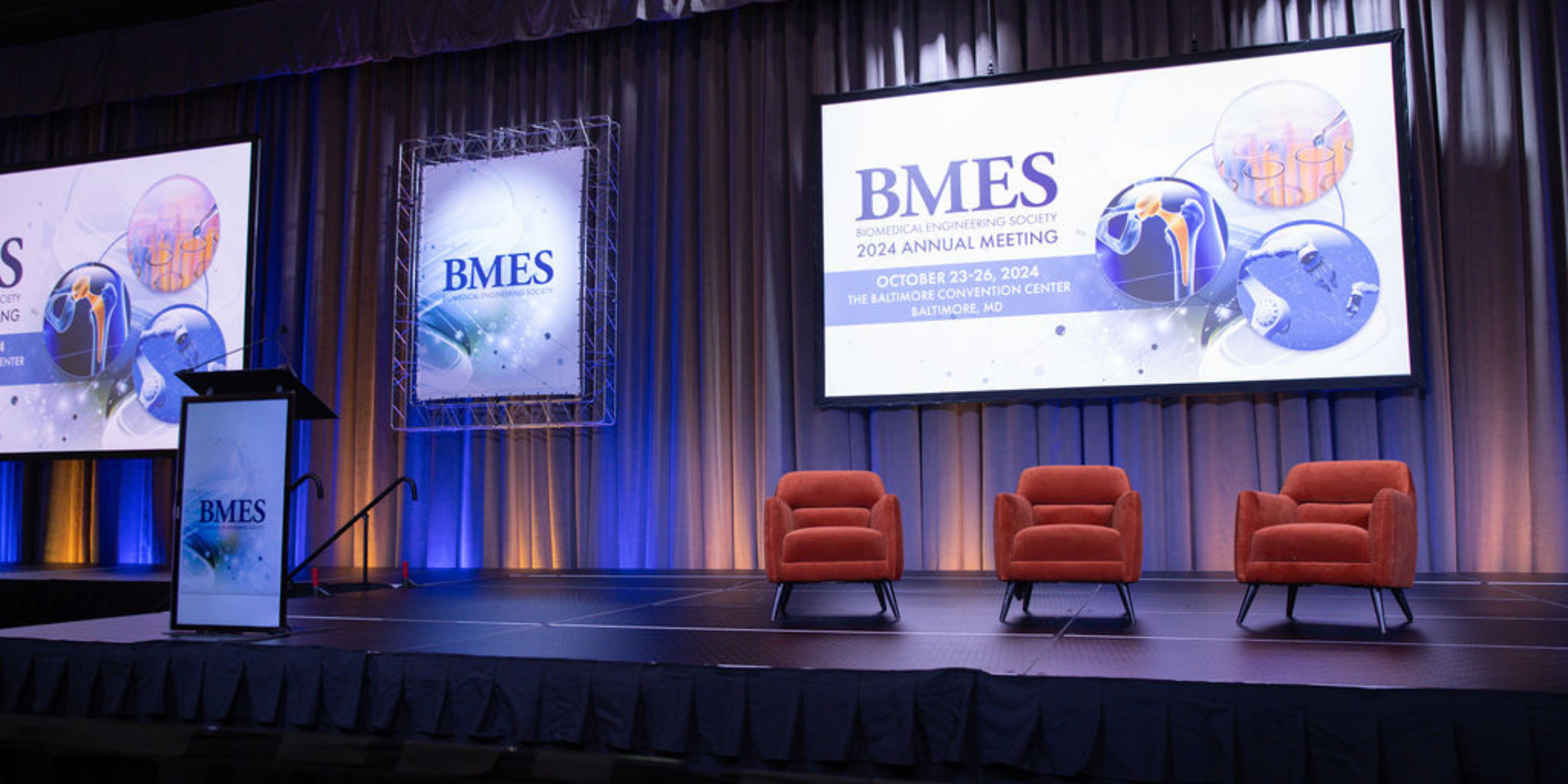Gordana Vunjak-Novakovic Opens BMES Annual Meeting
This is the fifth in a series of articles highlighting some of the technologies, processes and keynote plenary sessions presented at the 2024 Annual...
BMES serves as the lead society and professional home for biomedical engineers and bioengineers. BMES membership has grown to over 6,000 members, with more than 160 BMES Student Chapters, three Special Interest Groups (SIGs), and four professional journals.
Welcome to the BMES Hub, a cutting-edge collaborative platform created to connect members, foster innovation, and facilitate conversations within the biomedical engineering community.
Discover all of the ways that you can boost your presence and ROI at the 2024 BMES Annual Meeting. Browse a range of on-site and digital promotional opportunities designed to suit any goal or budget that will provide maximum impact.
Purdue University researchers have developed RF coils that are formable and stretchable, that could one day replace an MRI machine with an imaging session where comfortable fabric with the coils embedded inside are strapped onto the patient.
Researchers applied technology used in the defense and aerospace industries to create a novel way of doing some medical imaging, according to the university announcement.
‘'We created an adaptable, wearable and stretchable fabric embroidered with conductive threads that provides excellent signal-to-noise ratio for enhanced MRI scanning,'' said Joseph Rispoli, an assistant professor of biomedical engineering in Purdue's College of Engineering. Rispoli is a BMES member
The Purdue team's work appeared in the journal IEEE Transactions on Biomedical Engineering.
The Purdue flexible and stretchable coil could be placed close to the skin on an area or joint, regardless of its positioning.
Rispoli said the technology also is applicable to breast MRI and to enhancing medical device communication using wearable or implantable antennas.
“Our preliminary results show a full-scale device will be superior in all aspects of diagnostic testing, including increased sensitivity and fewer false positives,” Rispoli said.
Read more HERE.

This is the fifth in a series of articles highlighting some of the technologies, processes and keynote plenary sessions presented at the 2024 Annual...

This is the sixth and final article in a series highlighting some of the technologies, processes and keynote plenary sessions presented at the 2024...

This is three in a series of articles highlighting some of the technologies, processes and keynote plenary sessions presented at the 2024 Annual...

Dr. Cato T. Laurencin, CEO of The Connecticut Convergence Institute for Translation in Regenerative Engineering at UConn Health, has created a new...

In celebration of Black History Month, the Yale School of Engineering & Applied Science launched a video series: "Discussions on Science and Diversity

A nanotech therapy created by scientists at Michigan State University and Stanford University could eat away portions of the plaques that cause heart...